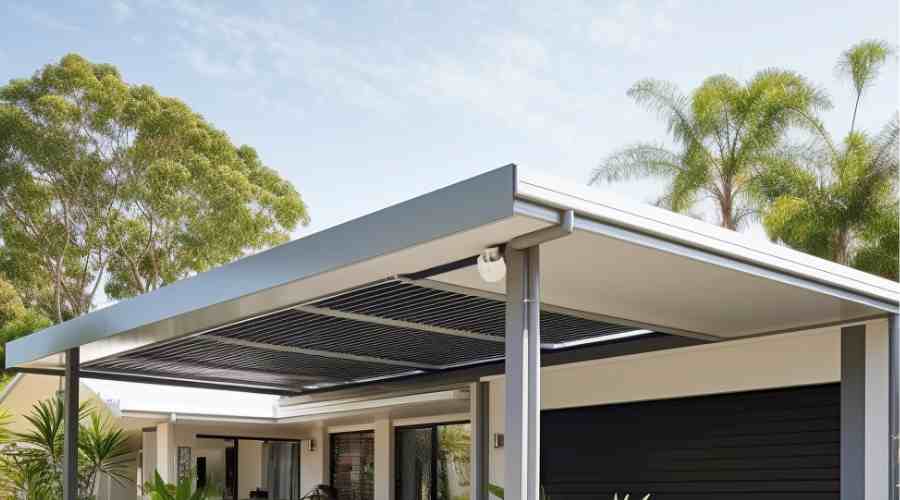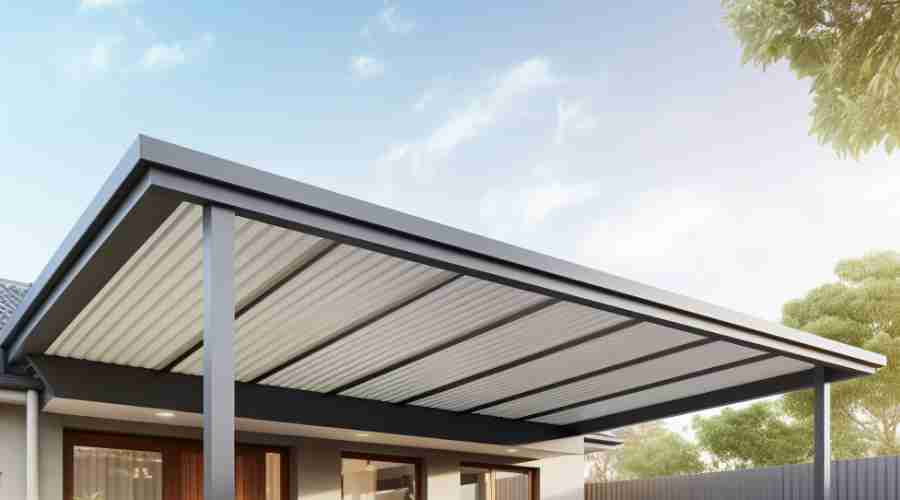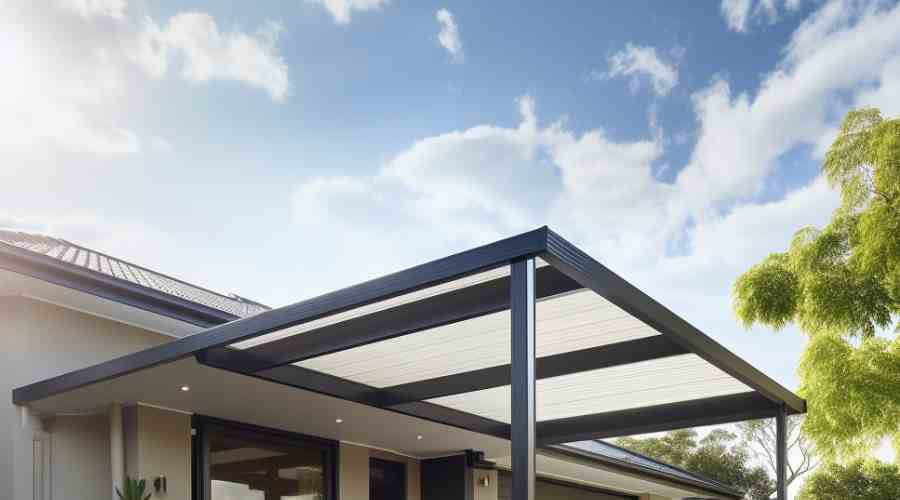How To Maintain Your Carport
Tips For Proper Carport Maintenance

Why Carport Maintenance is Important
There are several key reasons why proper carport care should be part of your regular home routine steps:
- Prevents Early Deterioration – Left unchecked, elements like water, hail, and sun can slowly break down carport materials over time. Sealing leaks, checking connections, and touch up painting help fend off early wear and tear.
- Avoids Structural Damage – From heavy snow piles to overgrown vines, it faces threats that can loosen infrastructure and cause dangerous structural failures if not addressed promptly.
- Saves Money – Performing minor routine tasks on your carport costs little compared to replacing entire sections or foundations after years of neglect.
- Extends Lifespan – With regular upkeep, a well-built carport can easily last 20-30 years or more, saving you the major future expense of full reconstruction.
- Maintains Function – Keeping it clear and sturdy ensures it can continue serving its intended purpose – keeping cars safe from sun, hail, heavy wind, and other hazards.
1. Keep Your Carport Clean
One of the simplest maintenance tasks that yields big benefits is keeping your carport free of clutter and debris. Follow these tips:
- Clear out any items like bicycles, containers, or debris that may have accumulated over time. Clutter blocks ventilation and drainage.
- Sweep the concrete pad or driveway underneath the roof to remove leaves, dirt, and other accumulation. This prevents puddles and keeps the space tidy.
- Clean out rain gutters and make sure downspouts are not obstructed. Clogged gutters can lead to water spills that undermine stability.
- Remove dirt, cobwebs, and bird nests from the carport roof structure with a broom or brush. This clearing allows for inspection and ensures correct drainage.
- Wash the roof occasionally with a garden hose to prevent build up of debris like pollen or dust that hampers water runoff.
Taking a few minutes each season to tidy up goes a long way!
2. Regular Inspections (Check for Potential Damage)
In addition to cleaning tasks, maintenance also involves regularly inspecting for any areas of concern or early signs of wear and tear.
Conduct thorough inspections at least twice per year – once in fall and again in spring. Look for:
- Wood rot – Check support posts, roof beams and plywood sheathing for soft spots, cracks, or dark moldy areas indicating deterioration. Tap beams with a hammer to detect hollow damaged sections.
- Rust spots – Scan metal roofing, flashings and connections for corrosion or swelling of the metal. Rust compromises structural integrity.
- Loose or missing screws/nails – Verify all visible fasteners are still tight and secure. Loose hardware can lead to critical failures.
- Sagging – Check if the carport roofline still shows right drainage pitch or if middle sections appear distorted from original positioning.
- Leaks – Inspect the concrete slab and perimeter soil during rain showers to spot any dripping sections or puddles forming under roof panels.
Addressing flaws early on saves you from dealing with larger headaches later. Have damaged elements repaired by a qualified professional as needed.
3. Perform Minor Repairs
When you DO encounter minor wear and tear through inspections, make those fixes promptly to get ahead of bigger issues. DIY fixes to tackle based on your abilities include:
Touch Up Coat Of Paint
For steel carports with Finish paint oxidation, lightly sand affected areas and apply matching corrosion-resistant enamel. This prevents further rust spread.
Resecure Hardware
Tighten any loose screws securing purlins or roof panels. Consider using pilot holes and/or larger washer plates if faster pull-out seems likely. Replace missing fasteners.
Patch Leaks
Seal small drips and seams in metal roofing using an elastomeric coating suitable for aluminum or galvanised steel. For shingled roofs, apply asphalt cement or similar patching compound.
Clear Gutters/Downspouts
Remove packed leaf debris or reposition spouts to ensure proper drainage. Consider gutter screens to simplify future maintenance.
Staying on top of minor fixes prevents water damage and deteriorating connections which jeopardise its structural stability long-term.
4. Enclose and Insulate
If you use your carport extensively for storage or as a protected outdoor space, consider enclosing the area and adding insulation for expanded functionality. Potential upgrade options include:
Side Screens
Install perforated vinyl panels or plastic strip curtains on the open sides. This acts as a strong wind/debris barrier while still allowing airflow and light.
Roof Insulation
Having spray foam insulation applied to the interior ceiling reduces heat transfer through the roof. This regulates temperature.
Roll Up Weather Curtains
Mount retractable curtain side panels allowing the interior to be fully sealed off during cold and rainy periods and opened up for good climate.
Drywall Interior
Framing and drywalling the interior (with proper moisture precautions) allows for a completely sealed controlled area. Insulate wall cavities for temp control.
Enclosing and insulating upgrades do involve considerable expense and contractor work in most cases. But the end result is a highly functional covered “room” for secure parking or storage.
5. Manage Water Flow
As a fundamental rule for carport maintenance – effective water management is critical. Follow these pointers:
- Maintain proper roof pitch and alignment so that rainwater and snowmelt flows completely off the carport surface, without pooling or excessive runoff splashing onto interior walls.
- Orient downspouts to direct discharge AWAY from the carport perimeter. Prevent puddles and soil saturation which lead to flooding or erosion undermining stability.
- If needed, consider extending downspouts further from the carport via underground drainage pipes. Or installing a dry creek bed lined with gravel can provide an alternate runoff solution.
- For metal carports, reduce rust risk by occasionally hosing salt and chemical deposits from roadways off both roof and support elements.
Handling water ingress and drainage smartly reduces leakage and hazards like slick floors, while also protecting against premature deterioration.
PRO TIP:
For carport owners seeking the highest safety, value and longevity from their structure:
Consider having a certified building inspector conduct an exhaustive maintenance assessment at least once every 3 years. Professionals will detect subtle deficiencies and prescribe necessary fix up that may otherwise go unseen until becoming serious deterioration issues. The small cost of periodic inspections can add decades of durable safe function to a well-built carport.
Frequently Asked Questions
How can I tell if my carport needs big mends?
Warning signs like lots of wood rot, rust holes, missing roof panels, bent poles, or sagging show that major work and equipment are needed by experts.
Does a carport add value to my home?
Yes, a well-built and kept-up carport can increase resale value. It shows protection for cars.
Can I make my open carport into a garage?
Sometimes, a current open one can be fully closed-in to make a garage. This needs new walls, power, drywall, insulation and sometimes a raised slab. Check permits first.
How long should a carport last?
With regular care and no storm damage, a good carport can easily last 25-30 years or more. Metal structure typically last longer than wood ones.
Conclusion
Having a protective carport in place makes everyday use of your property more convenient. But don’t take that carport for granted. With some basic tidying, inspection, restoration and water control efforts, you can ensure your carport remains steady and functional for decades rather than falling into disrepair after just a few years.
Be proactive against the elements, keep clutter cleared, fix potential issues promptly and handle runoff carefully. Following these classic tips will maintain safety, and appearance, maximise value and keep your cars parked safely out of the harsh weather conditions for months or years to come.


